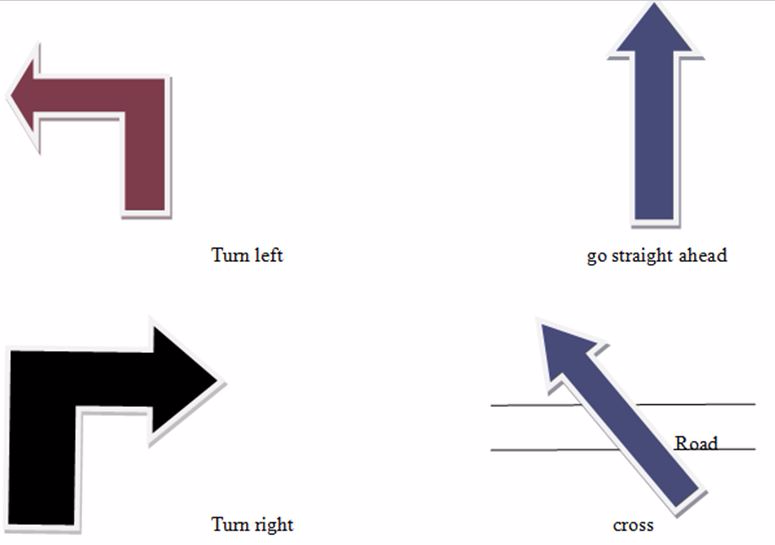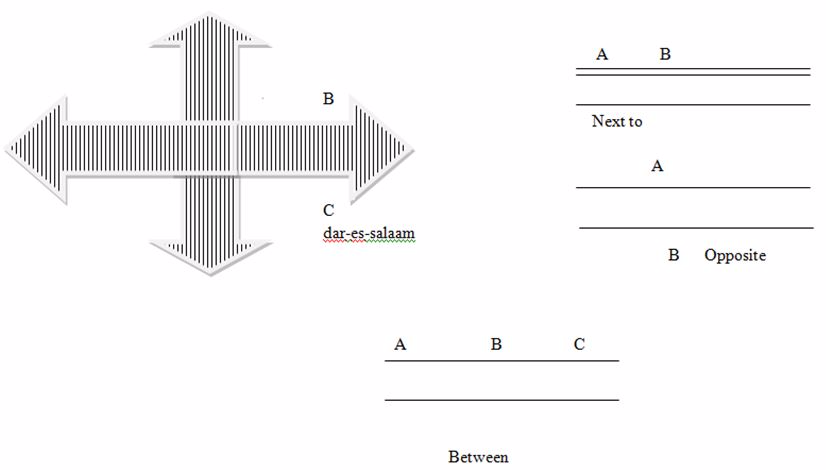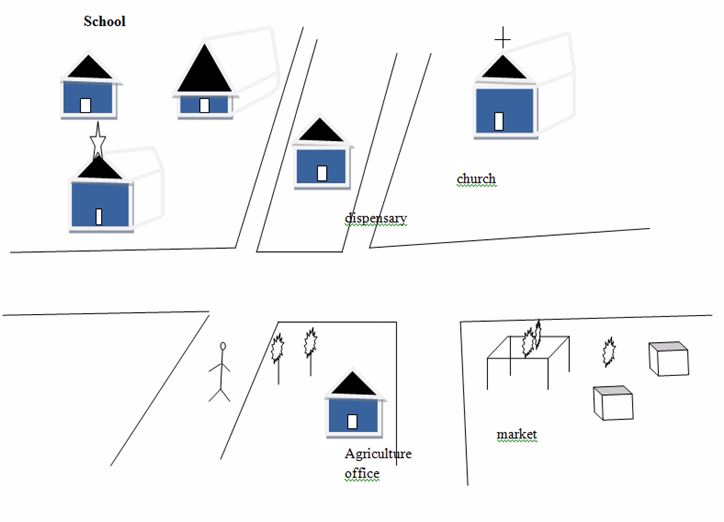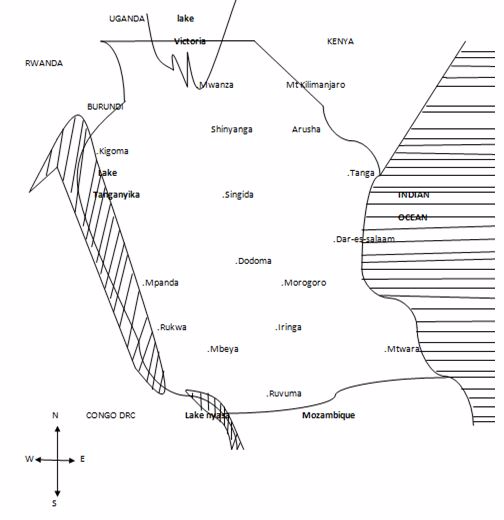GIVING DIRECTIONS
This requires students to have knowledge of how to ask for directions and identify the four points of a compass; using various prepositions such as: near to, in front of, beside, behind, under, adjacentto,between, on, in, to, by, at, into, onto, etc. for different situations.
Stating Directions
Giving and Asking for Directions
Give and ask for directions
Activity 1
Learning words and expressions related to the directions below:


Activity 2
Look at the map below and imagine you are one of the children asking for directions. Practise asking for and giving directions to:
- The mosque
- The dispensary
- The market
- The school

Words used when giving directions:
- Go straight
- Cross bridge
- Turn left
- Keep straight
- Turn right
- You will see
- Cross junction
- Walk along
Important issues when giving directions
- Use basic English to offer directions.
- Short phrases are best.
- Speak slowly.
- Use clear pronunciation.
- Spell out words if necessary.
In giving directions:
- Use transitions: After that, then, next, when you get to……… go
- Specify distance: Some people feel better knowing how long it will take to get to their destination, example "it’s about five minutes away."
- Use landmarks:"You will see large clock", "You will see blue large building."
- More useful language: It’s on [street name], It's opposite ...., It’s near .....
- Repeat yourself: If you repeat the direction again, the other person will feel comfortable.
- Clarify:Make sure that the person understands your directions, example "did you get all that?"
- Don’t guess: I am sorry, I'm not from here, I'm afraid I can’t help you."
Four Points of the Compass
Show four points of the compass
The Compass

- READ TOPIC 3: Using A Dictionary



No comments:
Post a Comment